Book traversal links for Annex 5. Treatment decision algorithms
Methodology for developing the treatment decision algorithms
Individual-level participant diagnostic evaluations and outcome data in children aged under 10 years presenting for evaluation of PTB were solicited from studies carried out in geographically diverse high TB burden settings. Missing data were imputed using multiple imputations by chained equations. Prediction models were built to classify participants as having TB (confirmed or unconfirmed TB) or unlikely TB using features from clinical evaluation and CXR as predictors. The predictors were selected based on those commonly used in the evaluation of children with PTB that were available in the individual participant data. An additional model was built excluding CXR features to assess performance in settings where CXR may not be available. Model predictor coefficients were estimated using meta-analytical methods used for clustered and multiply imputed individual participant data.
Model generalizability and validation were assessed using an internal/external leave-one-study-out cross-validation framework. After considering the implications of different sensitivity and specificity cut-offs, a panel of childhood TB experts reached consensus on selecting a modelled probability threshold to classify pulmonary TB
at 85% sensitivity. The model coefficient estimates for the predictors were scaled to produce a score such that a child with a set of features resulting in a total score over 10 constituted a classification of pulmonary TB with a sensitivity of 85%. The associated specificity of a total score over 10 is 37% for the algorithm with and 30% for the one without CXR features. It is important to note that the sensitivity and specificity apply only to the scored part of the algorithms, shown in the yellow boxes in algorithms A and B (Figure A5.1).
Triage steps were included in the final algorithms, prior to children entering the scoring part to improve the accuracy of prediction and the safety of algorithm use. Triage steps first assess for danger signs that may require immediate management or referral (as per IMCI guidance in children aged under 5 years), risk-stratifying based on risk of disease progression, and for low-risk children providing treatment for alternative diagnoses first before a re-evaluation. The use of mWRDs where available is included in the algorithms before scoring of signs and symptoms and CXR features. These steps
should improve diagnostic accuracy. The performance of the algorithm will be assessed through ongoing external validation.
During the guideline development group meeting in May–June 2021, the group reflected on the consequences of false-negative and false-positive conclusions based on integrated treatment decision algorithms. The group agreed that it was most important to avoid missing a TB diagnosis in a child who has TB, while accepting a certain degree of over-diagnosis, considering the large case detection gap and the consequences of a missed diagnosis of TB.
Treatment decision algorithms and operational guidance
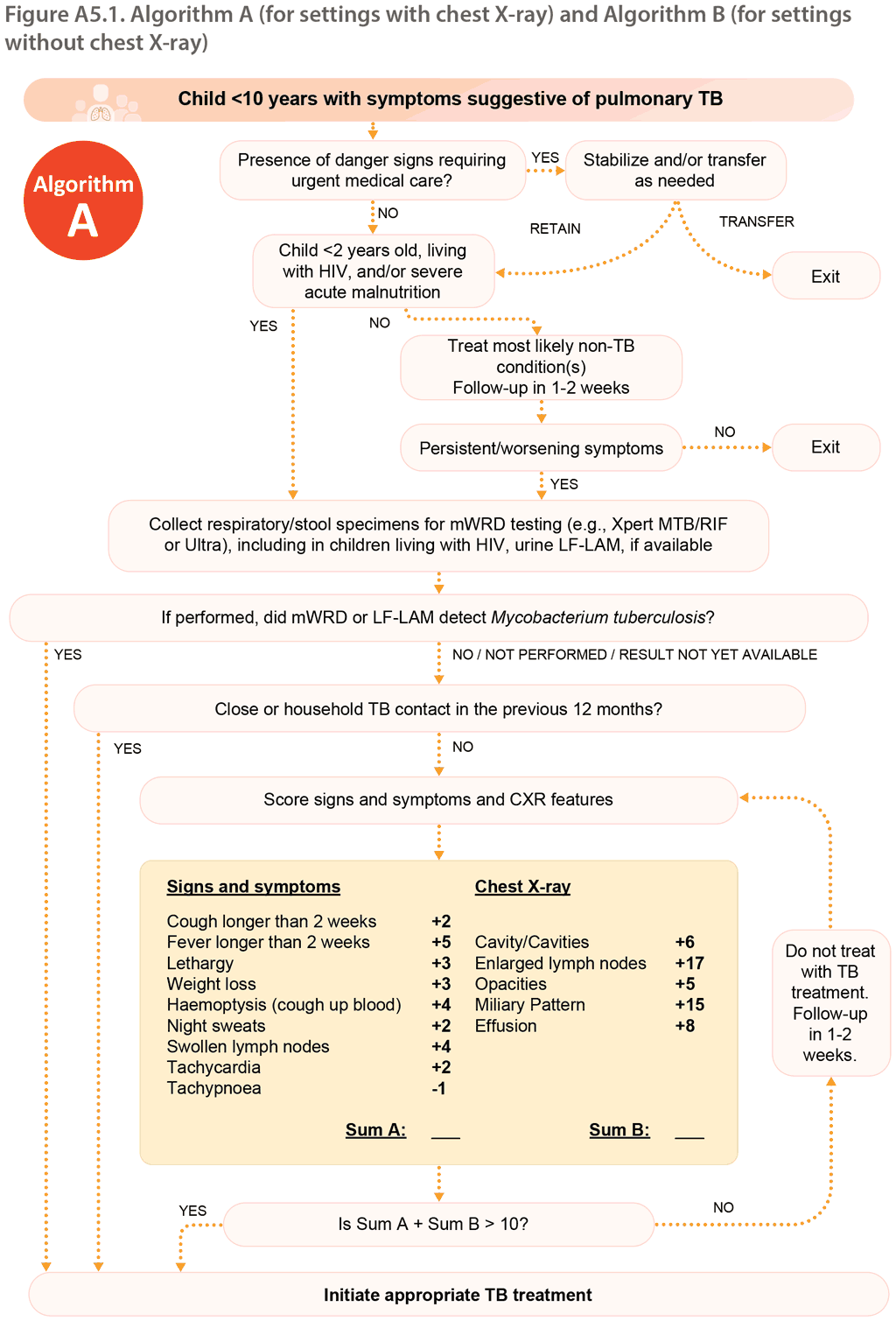
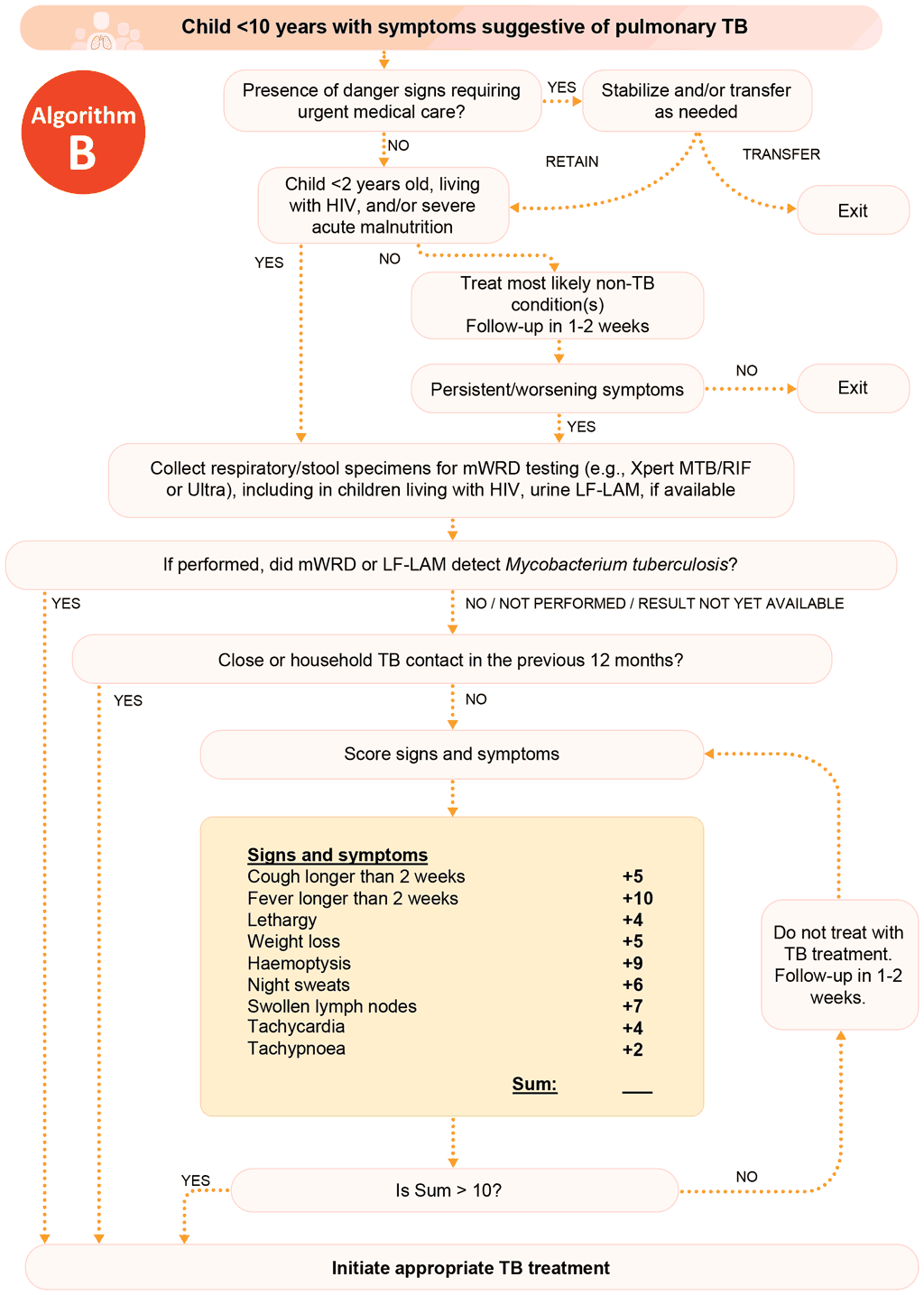
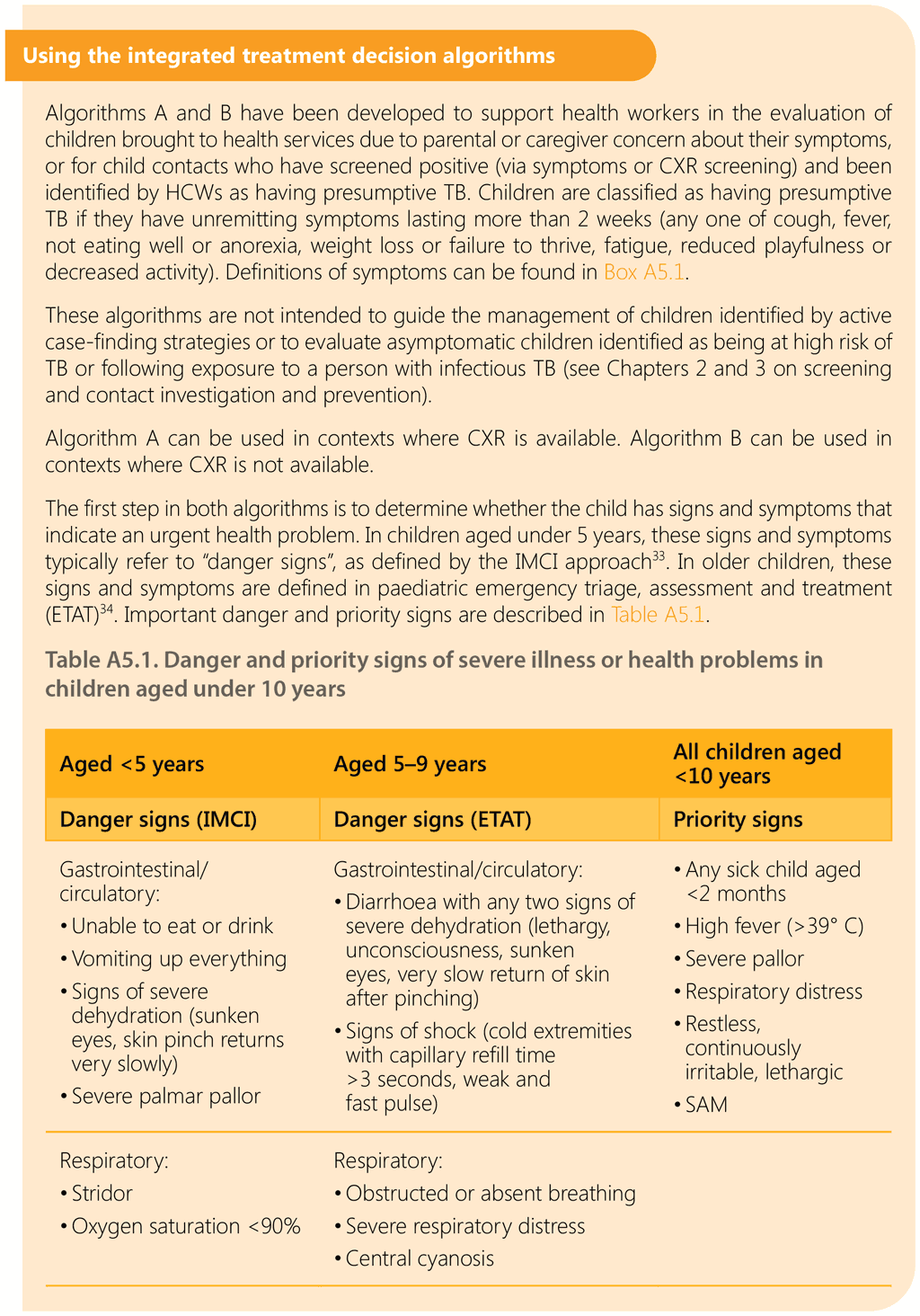
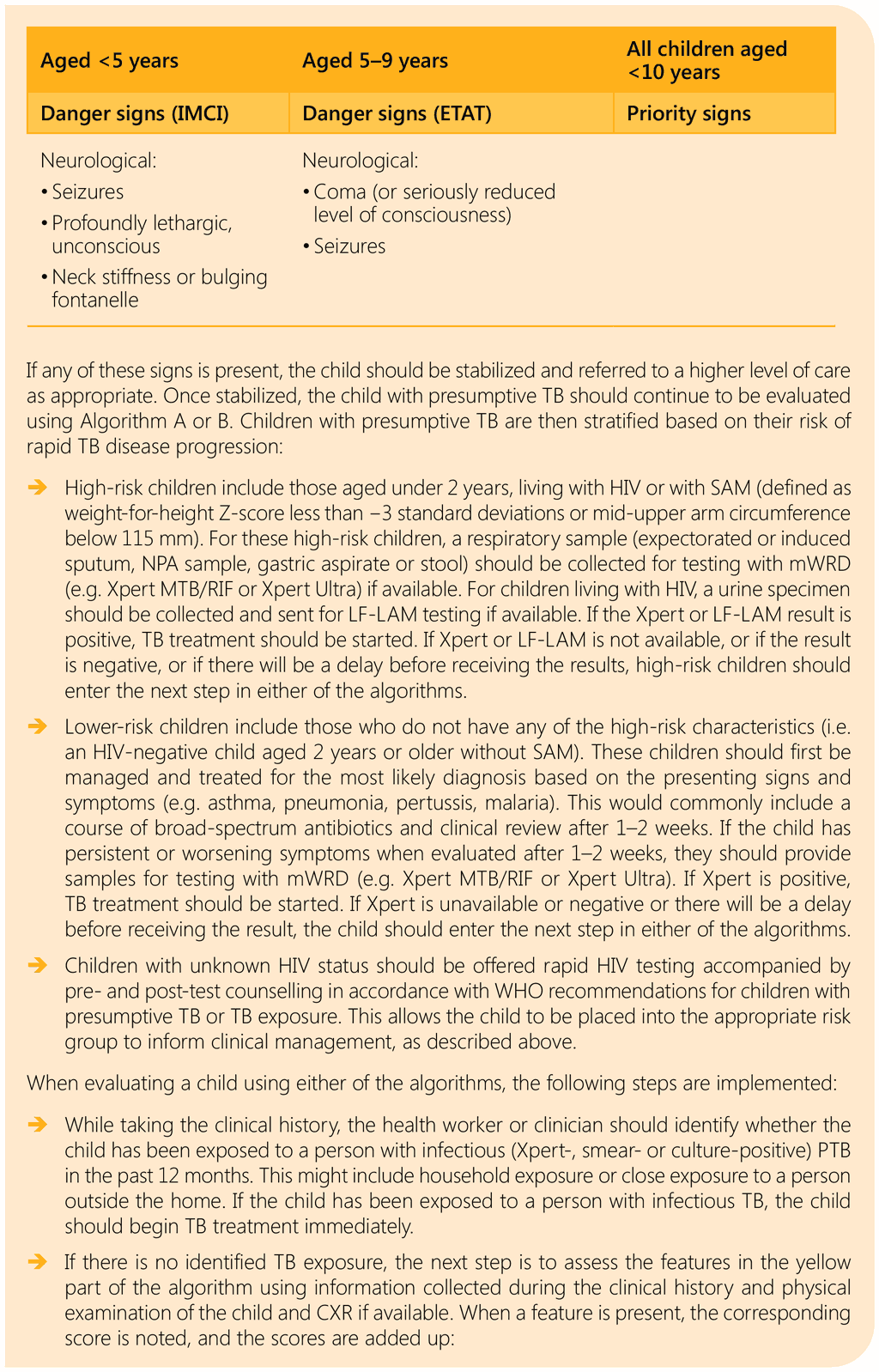
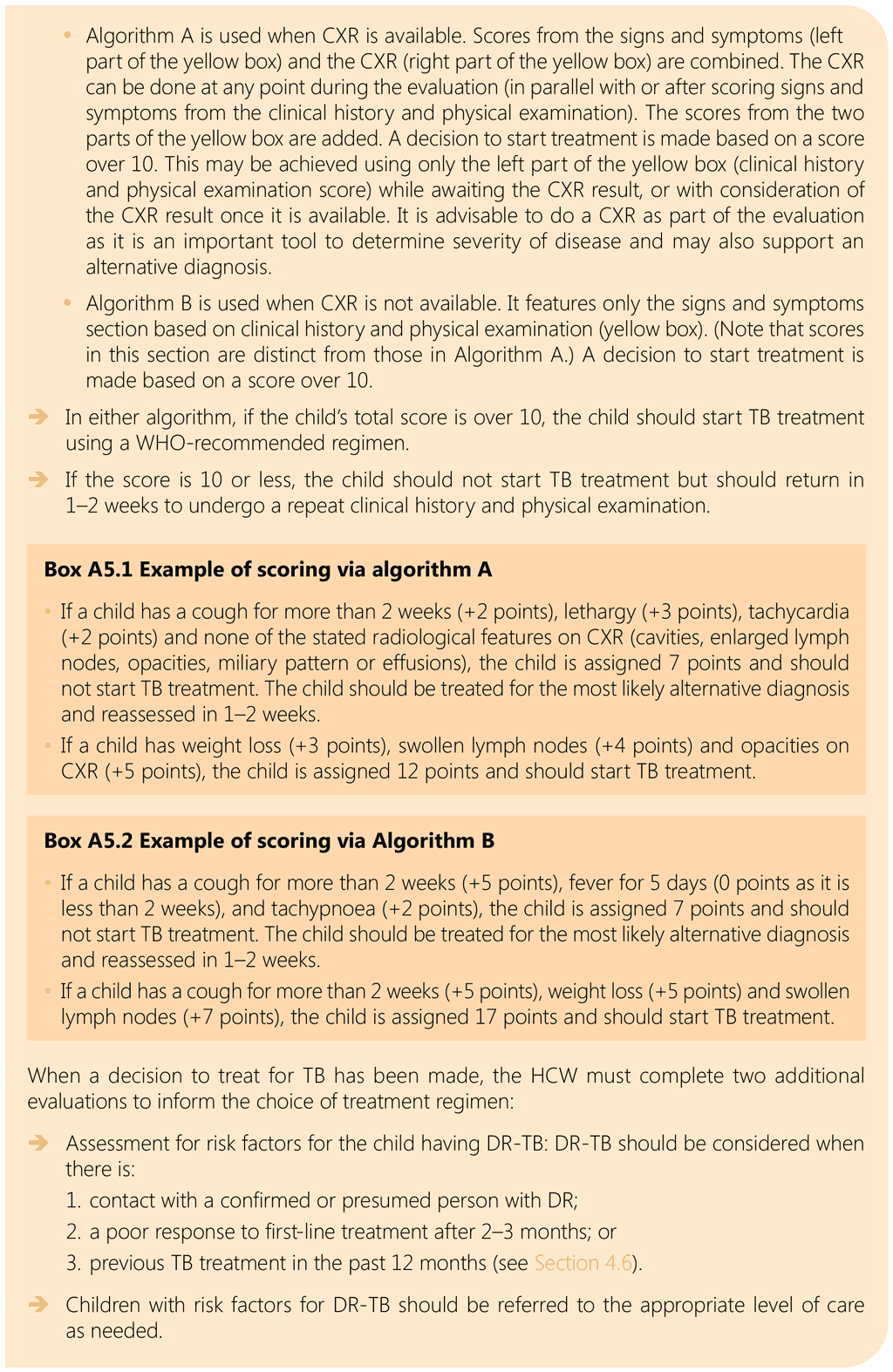
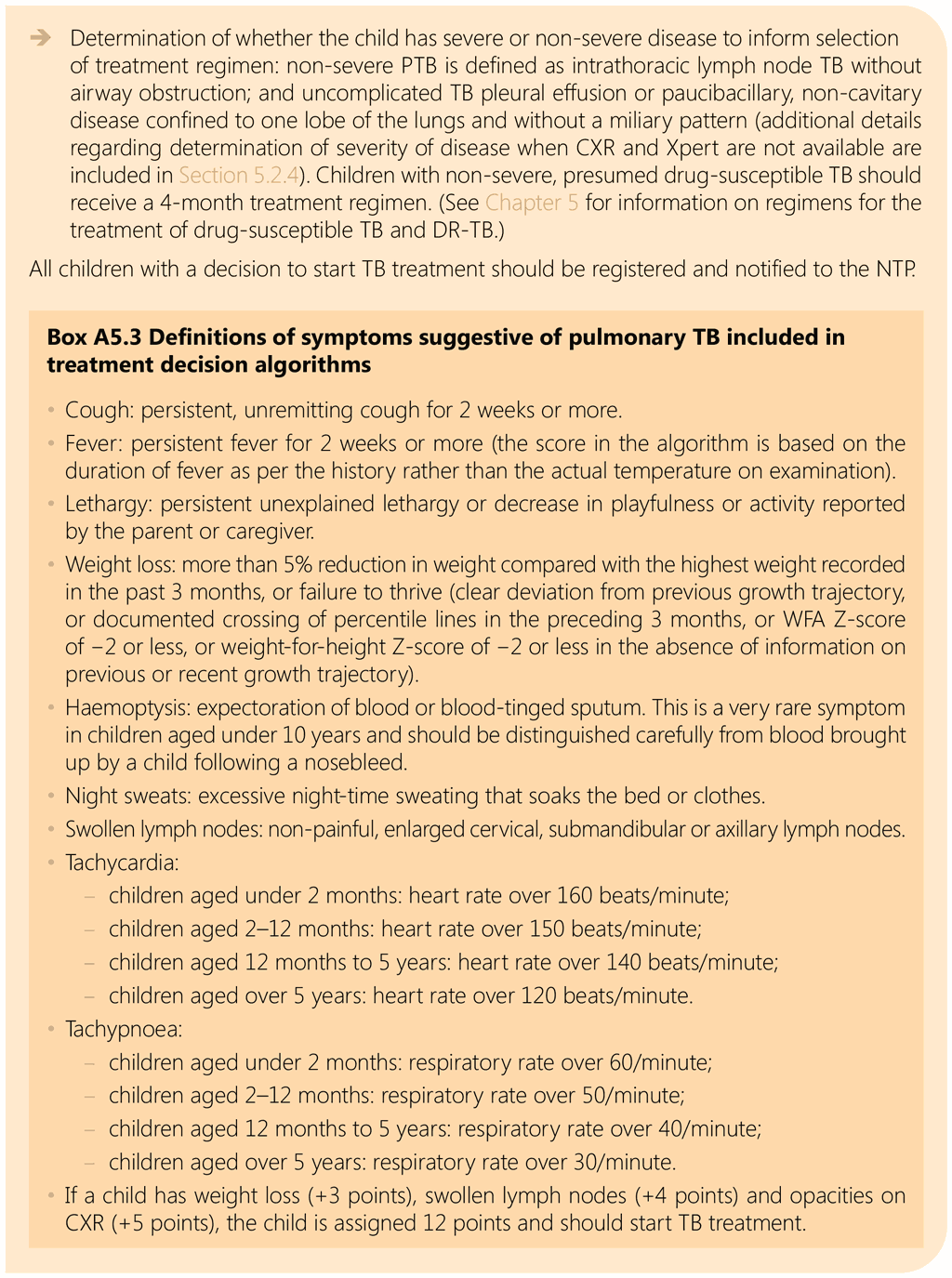
34 Integrated Management of Childhood Illness: chart booklet. Geneva: World Health Organization; 2014 (http://thepafp.org/website/wp-content/uploads/2017/05/2014-IMCI.pdf, accessed 1 December 2021).
35 Updated guideline: paediatric emergency triage, assessment and treatment – care of critically ill children. Geneva: World Health Organization; 2016 (https://apps.who.int/iris/bitstream/handle/10665/204463/9789241510219_eng.pdf?sequence=1&isAllowed=y,
 Feedback
Feedback